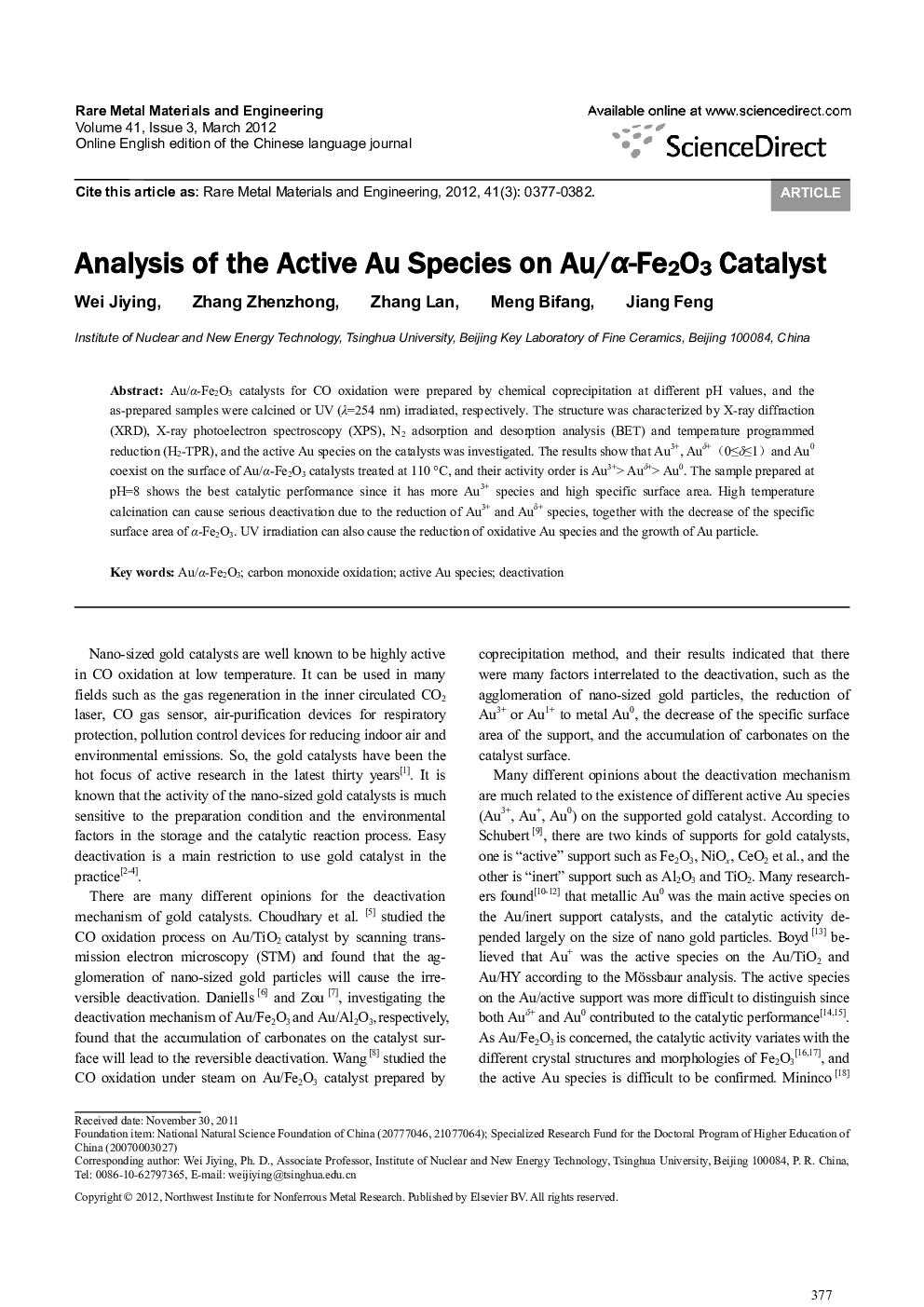| کد مقاله | کد نشریه | سال انتشار | مقاله انگلیسی | نسخه تمام متن |
|---|---|---|---|---|
| 815307 | 906331 | 2012 | 6 صفحه PDF | دانلود رایگان |

Au/α-Fe2O3 catalysts for CO oxidation were prepared by chemical coprecipitation at different pH values, and the as-prepared samples were calcined or UV (λ=254 nm) irradiated, respectively. The structure was characterized by X-ray diffraction (XRD), X-ray photoelectron spectroscopy (XPS), N2 adsorption and desorption analysis (BET) and temperature programmed reduction (H2-TPR), and the active Au species on the catalysts was investigated. The results show that Au3+, Auδ+ (0=δ=1) and Au0 coexist on the surface of Au/α-Fe2O3 catalysts treated at 110 °C, and their activity order is Au3+> Auδ+> Au0. The sample prepared at pH=8 shows the best catalytic performance since it has more Au3+ species and high specific surface area. High temperature calcination can cause serious deactivation due to the reduction of Au3+ and Auδ+ species, together with the decrease of the specific surface area of α-Fe2O3. UV irradiation can also cause the reduction of oxidative Au species and the growth of Au particle.
Journal: Rare Metal Materials and Engineering - Volume 41, Issue 3, March 2012, Pages 377-382